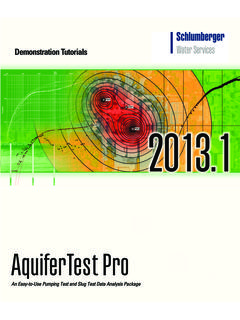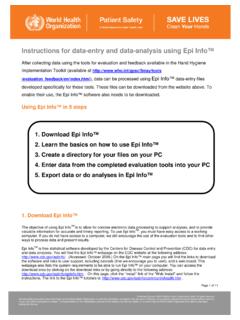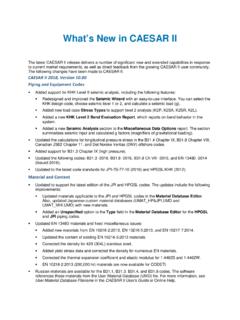Transcription of Spectrum Analysis Back to Basics - IEEE
1 1 M6-2 This presentation is intended to be a beginning tutorial on signal Analysis . Vector signal Analysis includes but is not restricted to Spectrum Analysis . It is written for those who are unfamiliar with Spectrum analyzers and vector signal analyzers, and would like a basic understanding of how they work, what you need to know to use them to their fullest potential, and how to make them more effective for particular applications. It is written for new engineers and technicians, therefore a basic understanding of electrical concepts is recommended. We will begin with an overview of Spectrum Analysis . In this section, we will define Spectrum Analysis as well as present a brief introduction to the types of tests that are made with a Spectrum and signal analyzer. From there, we will learn about Spectrum and signal analyzers in terms of the hardware inside, what the importance of each component is, and how it all works together.
2 In order to make measurements on a signal analyzer and to interpret the results correctly, it is important to understand the characteristics of the analyzer. Spectrum and signal analyzer specifications will help you determine if a particular instrument will make the measurements you need to make, and how accurate the results will be. New digital modulation types have introduced the necessity of new types of tests made on the signals. In addition to traditional Spectrum analyzer tests, new power tests and demodulation measurements have to be performed. We will introduce these types of tests and what type of instruments that are needed to make them. And finally, we will wrap up with a summary. For the remainder of the speaker notes, Spectrum and signal Analysis will simply be referred to as Spectrum Analysis .
3 Sections that refer to vector signal Analysis , in particular, will specify it as vector signal Analysis . Let s begin with an Overview of Spectrum Analysis . 3 M6-4 If you are designing, manufacturing, or doing field service/repair of electrical devices or systems, you need a tool that will help you analyze the electrical signals that are passing through or being transmitted by your system or device. By analyzing the characteristics of the signal once its gone through the device/system, you can determine the performance, find problems, troubleshoot, etc. How do we measure these electrical signals in order to see what happens to them as they pass through our device/system and therefore verify the performance? We need a passive receiver, meaning it doesn't do anything to the signal - it just displays it in a way that makes Analysis of the signal easy.
4 This is called a Spectrum analyzer. Spectrum analyzers usually display raw, unprocessed signal information such as voltage, power, period, wave shape, sidebands, and frequency. They can provide you with a clear and precise window into the frequency Spectrum . A vector signal analyzer can display the data in the same way as a Spectrum analyzer, but it has the added ability to display and process the time data of the signal. Depending upon the application, a signal could have several different characteristics. For example, in communications, in order to send information such as your voice or data, it must be modulated onto a higher frequency carrier. A modulated signal will have specific characteristics depending on the type of modulation used. When testing non-linear devices such as amplifiers or mixers, it is important to understand how these create distortion products and what these distortion products look like.
5 Understanding the characteristics of noise and how a noise signal looks compared to other types of signals can also help you in analyzing your device/system. Understanding the important aspects of a Spectrum analyzer for measuring all of these types of signals will help you make more accurate measurements and give you confidence that you are interpreting the results correctly. A year and a half after the first introduction of the PXA, Agilent is now introducing the world s highest performance mmW signal analyzer in April 11. 5 M6-6 Traditionally, when you want to look at an electrical signal, you use an oscilloscope to see how the signal varies with time. This is very important information, however, it doesn't give you the full picture. To fully understand the performance of your device/system, you will also want to analyze the signal(s) in the frequency-domain.
6 This is a graphical representation of the signal's amplitude as a function of frequency The Spectrum analyzer is to the frequency domain as the oscilloscope is to the time domain. (It is important to note that Spectrum analyzers can also be used in the fixed-tune mode (zero span) to provide time-domain measurement capability much like that of an oscilloscope.) The figure shows a signal in both the time and the frequency domains. In the time domain, all frequency components of the signal are summed together and displayed. In the frequency domain, complex signals (that is, signals composed of more than one frequency) are separated into their frequency components, and the level at each frequency is displayed. Frequency domain measurements have several distinct advantages. For example, let's say you're looking at a signal on an oscilloscope that appears to be a pure sine wave.
7 A pure sine wave has no harmonic distortion. If you look at the signal on a Spectrum analyzer, you may find that your signal is actually made up of several frequencies. What was not discernible on the oscilloscope becomes very apparent on the Spectrum analyzer. Some systems are inherently frequency domain oriented. For example, many telecommunications systems use what is called Frequency Division Multiple Access (FDMA) or Frequency Division Multiplexing (FDM). In these systems, different users are assigned different frequencies for transmitting and receiving, such as with a cellular phone. Radio stations also use FDM, with each station in a given geographical area occupying a particular frequency band. These types of systems must be analyzed in the frequency domain in order to make sure that no one is interfering with users/radio stations on neighboring frequencies.
8 We shall also see later how measuring with a frequency domain analyzer can greatly reduce the amount of noise present in the measurement because of its ability to narrow the measurement bandwidth. From this view of the Spectrum , measurements of frequency, power, harmonic content, modulation, spurs, and noise can easily be made. Given the capability to measure these quantities, we can determine total harmonic distortion, occupied bandwidth, signal stability, output power, intermodulation distortion, power bandwidth, carrier-to-noise ratio, and a host of other measurements, using just a Spectrum analyzer. M6-7 M6-8 Now that we understand why Spectrum analyzers are important, let's take a look at the different types of analyzers available for measuring RF. There are basically two ways to make frequency domain measurements (what we call Spectrum Analysis ): Fast Fourier transform (FFT) and swept-tuned.
9 The FFT analyzer basically takes a time-domain signal, digitizes it using digital sampling, and then performs the mathematics required to convert it to the frequency domain*, and display the resulting Spectrum . It is as if the analyzer is looking at the entire frequency range at the same time using parallel filters measuring simultaneously. It is actually capturing the time domain information which contains all the frequency information in it. With its real-time signal Analysis capability, the Fourier analyzer is able to capture periodic as well as random and transient events. It also can measure phase as well as magnitude, and under some measurement conditions (spans that are within the bandwidth of the digitizer or when wide spans and narrow RBW settings are used in a modern SA with digital IF processing), FFT can be faster than swept.
10 Under other conditions (spans that are much wider than the bandwidth of the digitizer with wider RBW settings) , swept is faster than FFT Fourier analyzers are becoming more prevalent, as analog-to-digital converters (ADC) and digital signal processing (DSP) technologies advance. Operations that once required a lot of custom, power-hungry discrete hardware can now be performed with commercial off-the-shelf DSP chips, which get smaller and faster every year. * The frequency domain is related to the time domain by a body of knowledge generally known as Fourier theory (named for Jean Baptiste Joseph Fourier, 1768-1830). Discrete, or digitized signals can be transformed into the frequency domain using the discrete Fourier transform. M6-9 The other type of Spectrum analyzer is the swept-tuned receiver.
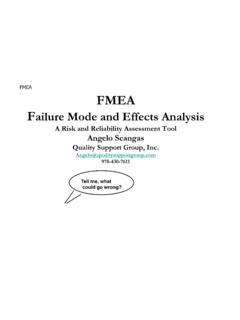

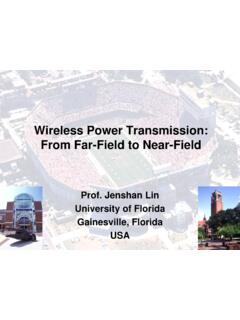





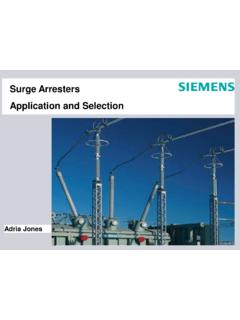
![Wind Farm Electrical Systems.pptx [Read-Only] - IEEE](/cache/preview/8/3/4/a/7/7/3/b/thumb-834a773be91d444a92c541b6bc1b2269.jpg)
